Iodine for geranium (pelargonium): what is it for and how to use it?
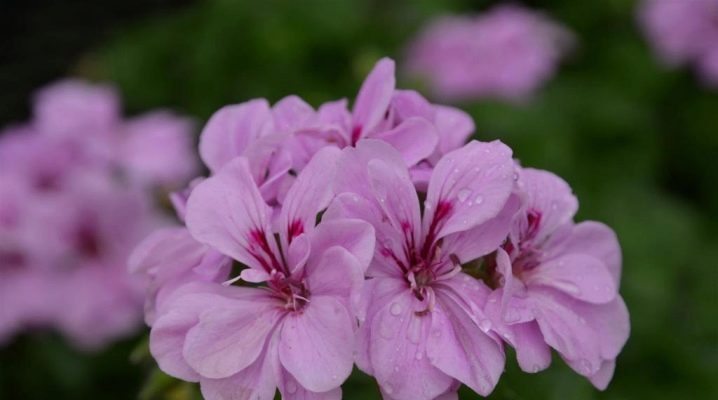
Before talking about how the feeding of geraniums with iodine affects the flowering of a plant, you should understand the name of the flowers. The vast majority of amateur gardeners do not consider it necessary to delve into botany, so it is often believed that geranium and pelargonium are one and the same flower.
It is believed that pelargonium is a scientific name, and geranium is a household name. Hence the confusion.
Similarities and differences of species
Both flowers are attributed to the Geraniev family. The total number of studied species is about eight hundred. Outwardly, the flowers are very similar, however, studies have shown obvious differences. The main evidence is the impossibility of crossing. The biggest difference is in the areas of plant growth. Pelargonium is a thermophilic flower, it is comfortable in the southern lands and warm apartments. Geranium is more cold-hardy and unpretentious, capable of growing at low temperatures in forests and meadows of the northern hemisphere. Grows well in gardens and parks, does not require shelter for the winter.
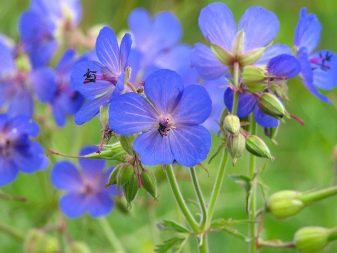
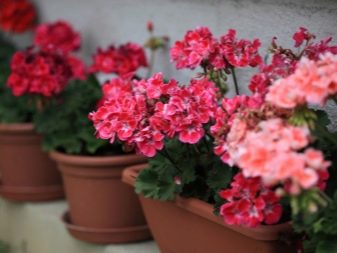
The stems and leaves of plants are the same, but the flowers are different.
In geraniums, they are formed by five or eight single petals, rarely gather in inflorescences. Pelargonium is distinguished by the corolla of the flower: two larger petals protrude upward, three small ones are located below. The flowers themselves are formed into large inflorescences. There are also differences in color. For example, geranium cannot be scarlet, and pelargonium cannot have bluish tints.
So, geranium is a garden plant, pelargonium is an indoor plant. Since the first name is most often used, we will not deviate from it either. We will talk about an indoor flower, although we will call it both "names".
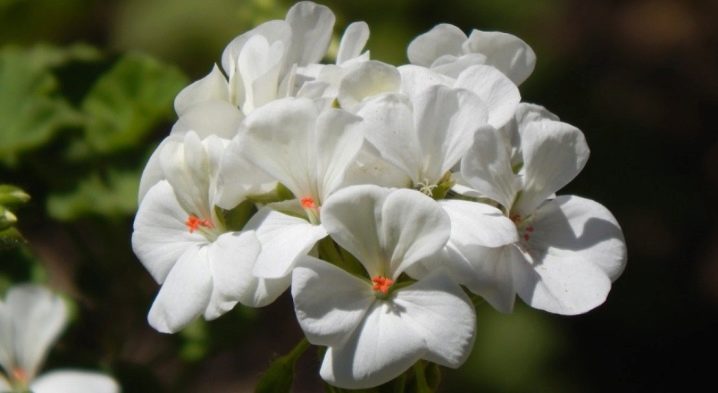
How to care?
Flowers in the house are great, but plants need proper care for abundant flowering. Geraniums need to be watered regularly and fertilized periodically. The plant will delight you with bright greenery, lush flowering and delicate aroma, if its owner fulfills a number of simple conditions.
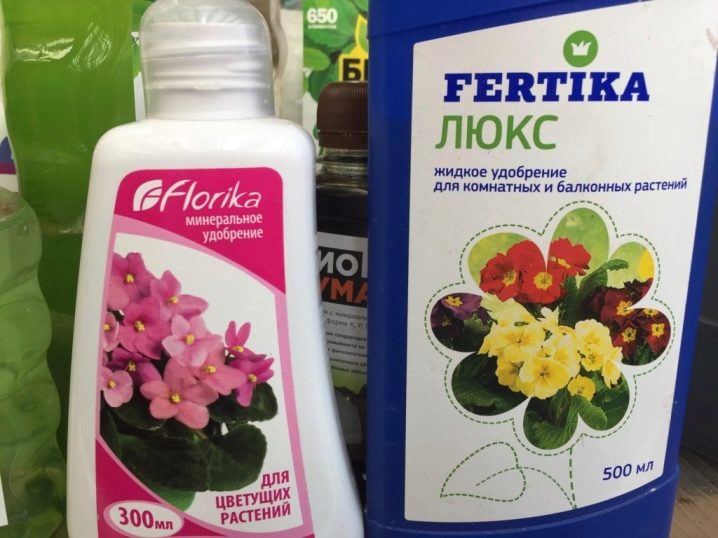
The place chosen for pelargonium should be warm and light. The window sill on the southwest side will be just right. It is better to make sure that in hot weather direct sunlight does not fall on the flower, does not burn the foliage and delicate petals. In addition, pelargonium requires space, so neighboring pots with indoor flowers should be placed at some distance from it.
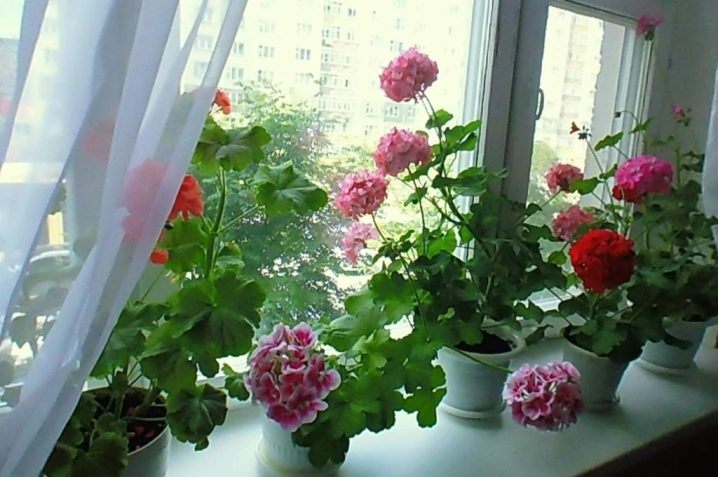
Geranium pots are chosen medium in size with holes in the bottom. First, drainage is placed in the planting container. A soil consisting of peat, sand and garden soil is poured onto a thick drainage layer. A recess is made in the moistened soil, into which the root system of the flower is placed and squeezed tightly. Watering is performed more often in summer, less often in winter.... The soil in the pot should not dry out. Excess moisture is also contraindicated.
For better oxygen passage, loosening is performed.

In order for the plant to receive the necessary substances, it must be fertilized. In winter, as a rule, no feeding is done. Spring and summer are another matter.
At this time, it is recommended to saturate the flower with useful elements:
- in spring - every two weeks;
- in summer and autumn - once a month.
Geranium does not perceive organic matter. She needs mineral fertilizers. During the period of active growth and flowering, the plant needs elements such as fluorine, potassium and nitrogen. In the spring, the three components are introduced in a 1: 1: 1 ratio, and later, when the geranium is about to bloom, the amount of nitrogen is reduced.
There are ready-made mineral dressings on sale, and they should be used.
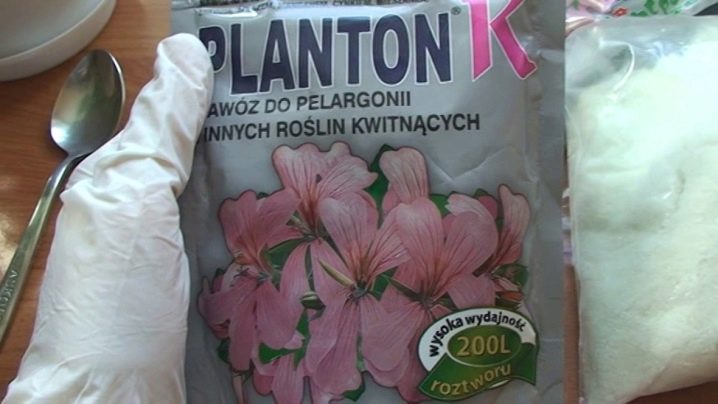
With careful attention to the plant, you can determine when he needs help. With a lack of nutrients, the buds will not tie. Geranium will "ask" for feeding the color of its leaves. Poor growth, lethargy, loss of brightness or exposure of the stem are symptoms of a lack of minerals in the soil.
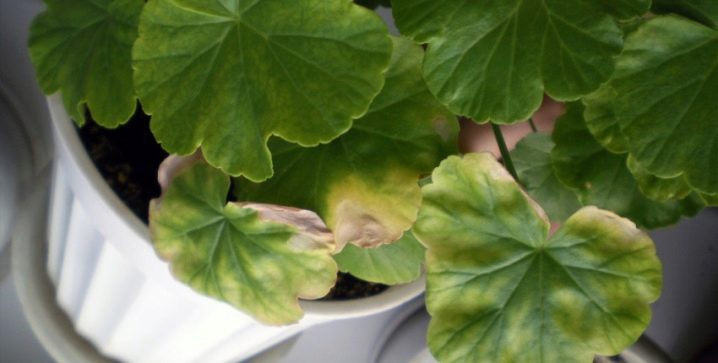
Subject to the temperature regime (not higher than + 26 in summer and not lower than + 12 degrees in winter), timely watering and fertilization, the flower grows and develops well. As for the abundant flowering, then there are certain tricks that we are ready to share.
What is iodine for?
The number of flowers will increase if you feed the plant with magnesium sulfate a couple of times over the summer. But most growers choose a different method. They mix two ingredients: regular drugstore-bought iodine and hydrogen peroxide.
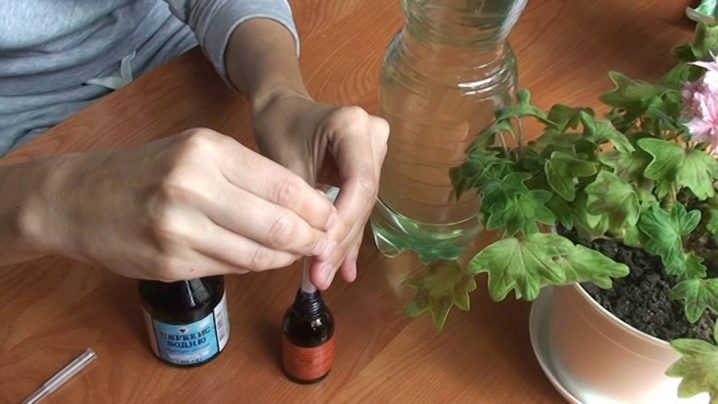
A solution of three elements (the third is water) weakened or unwilling to bloom geraniums are watered once every 7 days.
The described solution is very useful for an indoor flower. It strengthens the root system significantly. Strong roots provide the plant with nutrition, which is immediately visible: the leaves become larger, their color is brighter.
It is impossible not to notice how the appearance of the flower changes:
- his colors are saturated;
- the appearance of ovaries is accelerated;
- the number of buds increases;
- flowers are enlarged;
- the flowering period is extended.
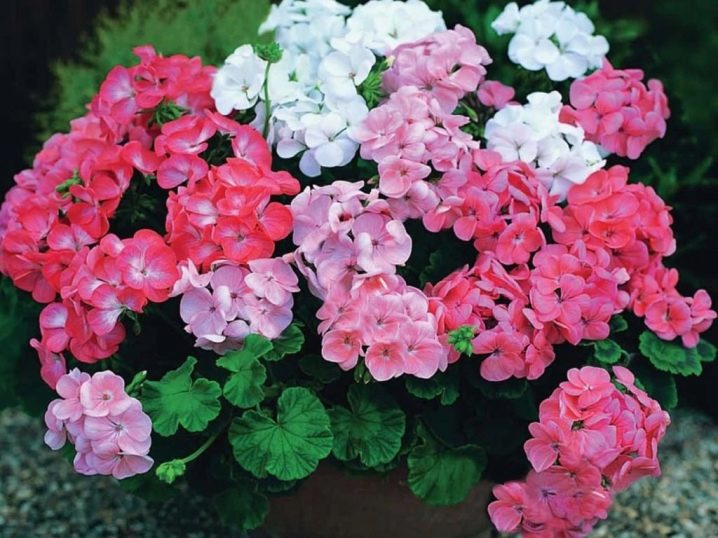
Like real "living water", the mixture works wonders. It destroys bacteria that appear on the plant, helps to fight diseases, protects the root system from decay. The flower fertilized with iodine transforms, shows all its advantages, all the brightness of colors, all the tenderness and irresistibility.
It is not worth using such fertilizer too often. If the plant is doing well, you can be content with regular watering.

How to prepare the solution?
For the preparation of the nutritional formula would need:
- hydrogen peroxide (you do not need to stock up on the composition, it will certainly be found in your home medicine cabinet);
- iodine;
- settled water at room temperature;
- syringe or pipette for accurate determination of constituents;
- container with a lid for mixing the components.
The need for water is 1 liter, for iodine - 0.6 ml, and hydrogen peroxide - 1 ml.
The proportions cannot be violated! An overabundance of ingredients will only harm the flower.
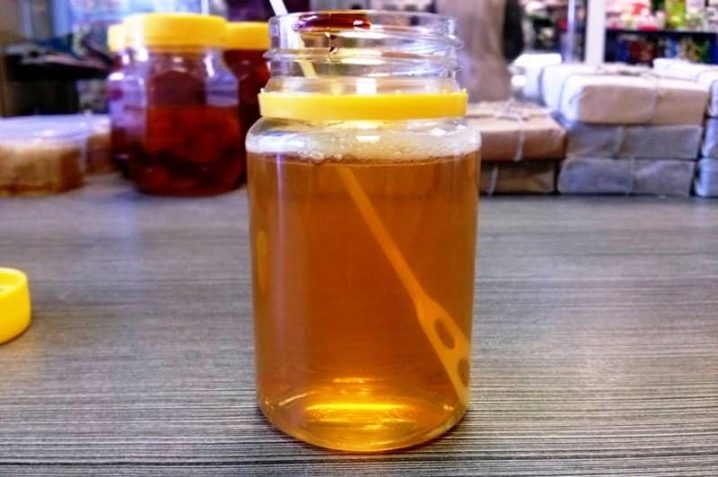
In the absence of a graduated instrument (beakers, syringe, pipette), the dose can be determined in drops. There are 23 drops in 1 ml of hydrogen peroxide, and 48 drops in 1 ml of iodine. Through simple calculations, we obtain the required number of drops of iodine 48 x 0.6: 1 = 28.8 drops.
Correctly measured ingredients should be thoroughly mixed until a homogeneous mixture is obtained. If iodine is used without hydrogen peroxide, then only one drop will be needed per liter of water. It is very important not just to water the flower with a nutrient solution, but to do it right. Otherwise, you can cause significant damage to the plant.
It's easy to remember the rules. First, the lower dried leaves are removed from the plant, access to the ground is freed. The second stage is the preparation of the nutrient solution. After that, the earth is loosened and thoroughly moistened. Thorough moistening is not meant to be sprinkled with a large volume of water, but by the expectation of complete absorption of the poured liquid.
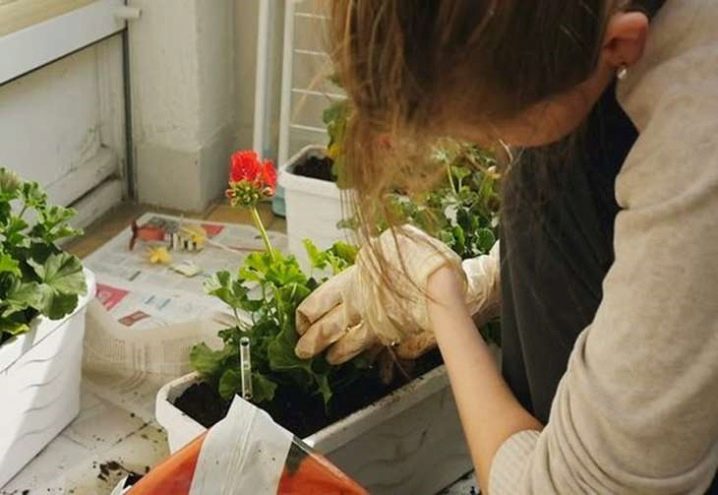
After thorough preparation of the soil, top dressing is introduced into it from a solution of iodine and hydrogen peroxide. The dose of the solution per plant is no more than 50 ml. If the solution is poured on dry ground, the roots of the flower will be damaged. They will literally burn out from the caustic "drink".
Watering must be carried out carefully, excluding drops of solution falling on the leaves. If, nevertheless, a few drops get on green vegetation, they should be immediately blotted with a soft cloth or napkin. And then it is advisable to rinse the sheet with water. Untreated leaves dry up and fall off.
Compliance with the rules of watering, and the exact dosage of the solution will make your geranium the most beautiful indoor plant.
The next video explains why geraniums need iodine.







































































































The comment was sent successfully.